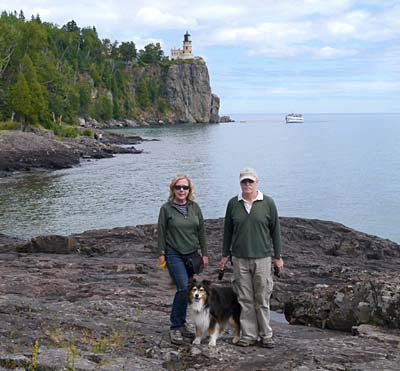 |
| Our last night 'On the Road with Maya' in Enid, Oklahoma (at least until next spring) |
Just
driving is not much fun. But that is
pretty much what we have been doing.
Normally a big drive day is 300 miles and we really like them to be less
than 200. For the past month we had been
staying in one place for two to five days and then maybe moving down the road
50 or 100 miles tops. It is a lot more
than that now. We have been feeling like
truckers lately. Maya is a great
traveler but she does get worn out with the road and thinks more than 6 hours a
day isn’t fun. We concur. However we have had a couple of fun stops
along the way.
We
spent two nights in St. Louis, Missouri and got to visit with one of my
long-time friends. Brenda and I met when
we were both brand new teachers, I won’t say how many years ago. We both taught photography at the same high
school and fast became best friends. Our
lives have kept us living in the same towns several times. We both started out in Odessa then several
years later we were both living in the DFW area. Then both of our husbands were transferred to
St. Louis. She has remained there and I
have moved without her several times since then. But we’ve stayed good friends. It was really great to see her!
Then
we spent a night in Enid, Oklahoma and visited David’s cousin, Donna and her
husband Larry in Drummond. They took us out to a
local Mexican Food Café and we had a great meal. We visited for hours while their dachshund,
Charlie Brown and Maya had a great time playing. (Maya definitely had the advantage.) Donna made us ‘coffee cup cake,’ which was
exactly that, a cake cooked in a coffee cup.
It was delicious and topped with good vanilla ice cream, how could it be
anything else?
While
we were in Wisconsin we received a call from my mom that my dad had gone to the
hospital and was getting a pacemaker. My
brother was with my parents and no complications were anticipated so the plan
was for us to stay on our driving schedule and be home in about 5 days. All went well and my dad was moved from Intensive Care to a
regular room so he could go home the next day.
But as all too often happens in hospitals, my dad had a fall that night
and broke three ribs and hurt his hand and injured his elbow and shoulder
making him unable to do much more than raise his head without help. Another call from mom came just as we were
leaving St. Louis.
 |
| People no longer mow lawns in Odessa, they vacuum them Fake green lawn 'carpet' is installed if you want a green lawn |
So
we really started driving at this point and made it back to Odessa as fast as
we could. Dad is still in the hospital
but he is in the therapy wing now. He is
doing pretty well although I can see first-hand that broken ribs are very, very
painful. Dad is in a world of hurt and
there isn’t too much that can be done for that. The hospital food isn’t making him very happy
either. We are trying to keep him
cheerful while he goes through all this and sneaking him in something good to
eat every so often.
 |
| Visiting Dad in the hospital My mom with my cousins Byron and Dale, wife Cathy and the kids Reed, Brailyn, Taite and dad's foot |
Our
plans are still to be in Nacogdoches by August 31 and dad is coming along so
that should happen. I’ll keep you
posted…
David’s
Stats:
Hours
of Boring Driving: 40+ hours
Days
Hiking Hospital Floors: 8 and counting
Days
near or over 100 degrees: every day south of Madison, WI
Times
we’ve said it’s too ****ing hot: Beyond
count

















































